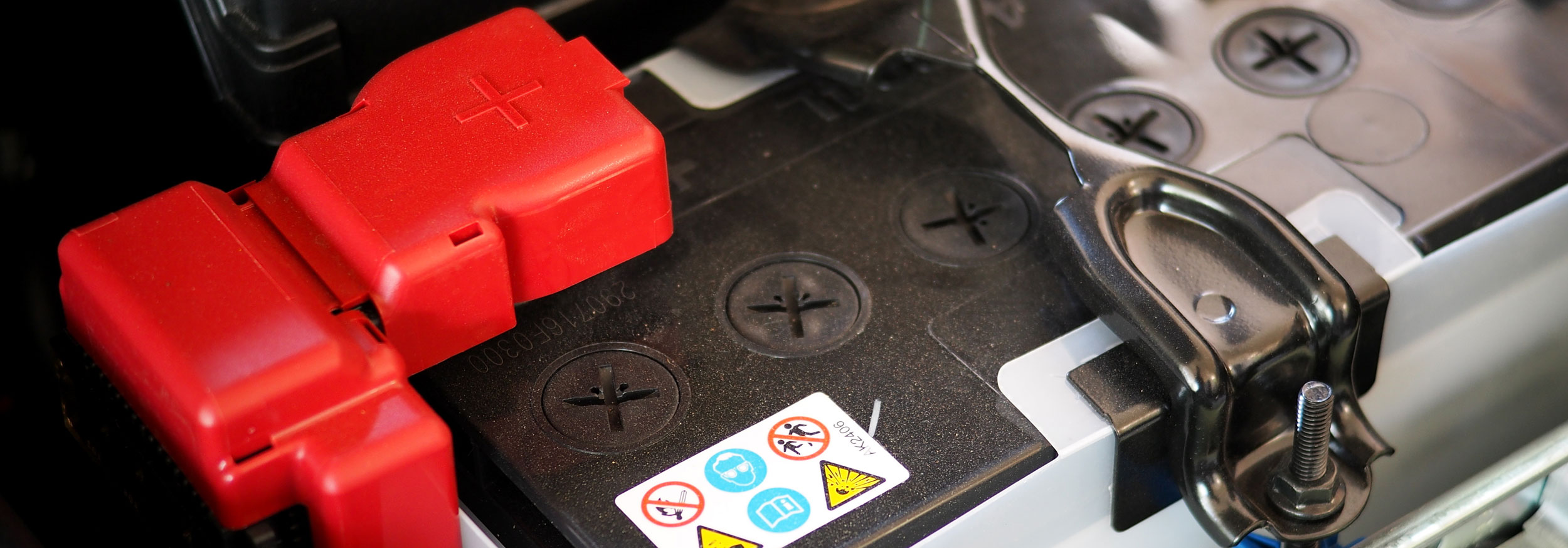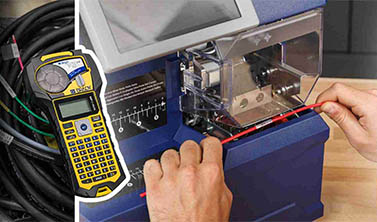Automotive Battery Cable Specifications & Overview

Most of us are familiar with battery cable and the battery cable specification for a given application. That said, some common questions arise regarding automotive battery cable specifications and the usage of cables in other applications.
Battery Cable and Its Uses
As a quick refresher on battery cable—battery cable is an automotive cable with a rigid single-conductor wire made of heavy gauge copper. It’s typically insulated with PVC or XLPE and used to safely link electrical automotive parts with the vehicle’s battery.
What is a battery lead? The parts of the battery cable are sometimes referred to as battery leads. The battery cable features a positive lead that connects to the ignition. Likewise, it features a negative lead, grounding and connecting to the chassis. Automotive battery cables have a 60-volt rating.
Insulated and flame-retardant, the outer jacket protects the inside cable from environmental hazards, including salt, fuel, oil, water, lubricants, and acid. In addition, battery cables can withstand moderately high heat. Automotive battery cable is also used in marine applications and other industrial functions.
What gauge is an automotive battery cable? Automotive battery cables come in several different sizes, and the proper size depends on the application and need. Most car batteries use a 12-volt power supply, which is best suited to a 6-gauge battery cable (the standard). Although the battery cable can withstand up to 60 volts, it is ideal for 12-volt electrical systems.
Battery Cable Specification and Standards
As for the technical battery cable specification, the requirements are SAE J1127. There are five specification types for battery cable:
- Type SGR: synthetic rubber insulated.
- Type SGT: thermoplastic insulated.
- Type SGX: Cross-linked polyethylene (XLPE) insulated.
- Type STX: Cross-linked polyethylene (XLPE) insulated, featuring a thinner wall.
- EV & Hybrid: Cross-linked polyethylene (XLPE) or thermoplastic elastomer (TPE) insulated.
The standard test requirements for SGT & SGX battery cables are:
- Strand coating
- Physical properties (insulation)
- High temperature
- Dielectric
- Cold Bend
- Flame
- Oil absorption
- Abrasion resistance
SGR battery cable doesn’t have an SAE J1127 test requirement for dielectric, flame, or abrasion resistance. All battery cables must meet the SAE requirements to ensure quality and safety. The rigorous testing process helps protect consumers as well as their products.
Battery Cable Gauges
The following are the different gauges for battery cables:
8 Gauge Battery Cable: Slightly thicker and is often used for medium-duty applications. It can handle around 40-50 amps, making it versatile for a variety of smaller power needs in vehicles.
6 Gauge Battery Cable: A good choice for medium to heavy-duty applications. It can handle about 50-75 amps and is flexible enough to be routed through tighter spaces in the engine compartment.These are commonly found in lower power vehicles, like golf carts or ATVs.
4 Gauge Battery Cable: Commonly used size for many automotive applications, particularly for battery-to-starter connections in most vehicles. It provides a balance between flexibility and current capacity, handling up to 100 amps.
2 Gauge Battery Cable: Designed for heavy-duty applications, such as in large trucks, SUVs, and high-performance vehicles. It can handle up to 150 amps and is often used in systems where higher power is needed, like heavy machinery
1 Gauge Battery Cable: Slightly thicker than 2 AWG and is used in applications requiring very high current loads. It can carry up to 200 amps and is commonly found in V8 engines.
1/0 Gauge Battery Cable (0 Gauge): A thick cable used for very high-current applications that can handle up to 250 amps. This size is ideal for long cable runs or systems with exceptionally high power demands.
2/0 Gauge Battery Cable (00 Gauge): Thicker than 1/0 AWG and is used in the most demanding applications and can handle up to 300 amps, making it suitable for large engines, like marine and diesel engines.
3/0 Gauge Battery Cable (000 Gauge): Used in extreme heavy-duty applications, where large amounts of current need to be transmitted over longer distances. It can handle up to 350 amps with ease and is used in marine and diesel engines.
4/0 Gauge Battery Cable (0000 Gauge): The thickest of the standard battery cables and is used for the most demanding electrical systems. It can carry up to 400 amps and is typically used in commercial and industrial applications.
Types of Automotive Battery Cable
So, what types of automotive battery cables are best? It generally depends on the automotive or mechanical application. Though most battery cables seem similar, there are some significant differences between the different types of battery cables.
SGR Battery Cable
SGR battery cable is used primarily in automotive applications, but it is also suited to other applications like marine and RV. SGR is used between battery ground and starter circuits. The SGR features flexible synthetic rubber insulation with a stranded bare copper conductor. SGR has a temperature range of -40°C to +105°C and a voltage rating of 50V.

SGT Battery Cable
SGT battery cable is typically found in battery ground and starter circuits. SGT has thermoplastic (PVC) insulation with a stranded bare copper conductor. SGT has a temperature range from -40°C to +105°C and a voltage rating of 50V.
SGX Battery Cable
SGX is a cross-linked cable used in automotive applications between starts and battery grounds. The SGX has cross-linked polyethylene (XLPE) insulation and a stranded bare copper conductor. Similar to the other types of battery cable, the SGX has a voltage rating of 50V with a broader temperature range of -40°C to +125°C. The SGX battery cable has stronger resistance to aging and abrasion as compared to the SGT and SGR.

STX Battery Cable
STX battery cable is similar to SGX in that it is a cable with cross-linked polyethylene (XLPE) insulation and a stranded bare copper conductor. Like the other types of automotive battery cable, the STX has a 50V voltage rating and a temperature range of -40°C to +125°C. The STX features a thinner wall, making it more flexible and ideal for use in tight automotive applications.
EV & Hybrid Cable
EV & Hybrid cablefeatures thermoplastic elastomer (TPE) or cross-linked polyethylene (XLPE) insulation and a stranded bare or tinned copper conductor. The EV & Hybrid cable has a voltage rating of up to 600V and has a temperature range of -40°C to +125°C. This makes it suitable for modern automotive systems.

Automotive Battery Cable Comparison Chart
| SGR | SGT | SGX | STX |
|---|---|---|---|
| Stranded Copper Conductor | Stranded Copper Conductor | Stranded Copper Conductor | Stranded Copper Conductor |
| Gas, Oil, Abrasion Resistant (plus most other engine fluids) | Gas, Oil, Abrasion Resistant (plus most other engine fluids) | Gas, Oil, Abrasion Resistant (plus most other engine fluids) | Gas, Oil, Abrasion Resistant (plus most other engine fluids) |
| Rubber Insulation | Themoplastic (PVC) Insulation | Cross-Linked (XLPE) Insulation | Cross-Linked (XLPE) Insulation with thinner wall |
| 50V | 50V | 50V | 50V |
| 40°C to +105°C | -40°C to +105°C | -40°C to +125°C | -40°C to +125°C |
Common Questions About Automotive Battery Cable
When exploring the different types of automotive battery cables, several questions commonly arise. Here are a few of the most common questions about battery cable.
What gauge is used for automotive battery cable?
The typical automotive battery cable is a 6-gauge cable. Most vehicles rely on a 12-volt power supply, making a 6-gauge battery cable the appropriate choice. An automotive battery cable can withstand 60-volts, but it is best for 12-volt systems.
Can I use an automotive battery cable in other applications?
With the ubiquitous supply chain issues that many companies face today, it’s helpful to note that most automotive battery cables can be used in other applications such as marine use. Consult with an expert if you’re looking for the appropriate cable for a less-common application.
What is the difference between automotive battery cable and welding cable?
Welding cables and automotive battery cables are similar, but welding cables are more flexible. Welding cables are often insulated with synthetic rubber, like EPDM and neoprene and are suited up to 600 volts. Automotive battery cables are more rigid and resistant to higher temperatures and hazards such as oil and gas.
When it comes to choosing a welding cable vs. battery cable, it’s important to understand the difference. You can use welding cables as battery cables, but automotive battery cables aren’t suited to the high-voltage and flexibility requirements of welding. Using an automotive battery cable in higher voltage applications could be dangerous.




